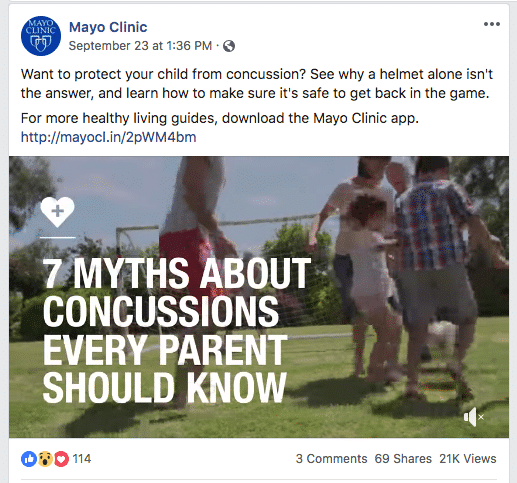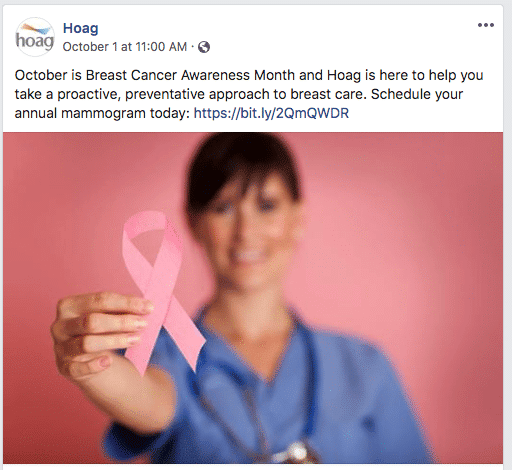5 Social Media Essentials for Healthcare Marketing
 Chances are, the majority of your staff has at least one social media page they check fairly often. Members of your staff have written posts and uploaded photos plenty of times before—they know the social media essentials, and they’re happy to post on the company Facebook page.
Chances are, the majority of your staff has at least one social media page they check fairly often. Members of your staff have written posts and uploaded photos plenty of times before—they know the social media essentials, and they’re happy to post on the company Facebook page.
It’s great to have someone on staff willing and able to do these things. In fact, we strongly believe that you usually won’t have to outsource this organic social media posting (more on this differentiation later)—someone in the office is usually happy to do it.
However, that doesn't mean they're prepared for some of the challenges of social media marketing in the healthcare space.
Related: 5 Things People Get Wrong about Social Media for Doctors
1. Social media pages should reflect branding
What most represents your healthcare organization?
Is it the building itself? The doctors? A logo? Your list of services or products? Or is it something more than that?
We believe your branding is more than just a logo. For a healthcare organization, good branding typically reflects the way you make people feel. A good starting point for developing your brand is focusing on the “after.” What kind of relief, peace of mind, or outcome can someone expect when they choose you for care or treatment?

Alternatively, you can focus on the level of care your doctors provide. Check out the facial expressions of the doctor and patient in this Facebook cover photo. It's certainly enough to inspire confidence in this team.

Of course, your logo and colors are important and can help patients remember your brand. But the branding itself is something much more. Your profile image, cover image, and posts should reflect who you are, as a brand—and that’s more than just a logo.
2. Images must be optimized for mobile
When you’re building out a company Facebook page from scratch, chances are you’re doing it on a desktop computer. It’s easy to forget that most people are actually accessing your page from their mobile devices.
In fact, around 80% of social media usage occurs on a mobile device. The way an image shows up on a desktop computer may not be the same way it shows up on a smartphone—particularly with the cover image.
When text or imagery spans to the edges of a wide photo, it’s often cut off in a mobile device. This is true for both Facebook and Twitter. The best way to find out? Download the apps on your phone to test mobile friendliness.
3. Posts should follow the 80/20 rule
Not sure what to say next on your Twitter or Facebook feed? We recommend following the 80/20 rule: posts should be 80% informative and 20% promotional.
Four out of every five posts should inform, entertain, or educate. You might share articles from your own blog or a reputable news site. You might provide a helpful health or nutrition tip or information about a particular condition (provided it’s not too graphic). You could even share healthy recipes.

What you’re focused on here is “shareability.” This kind of post gives your audience value. It's a reason to follow you, and something to share with their own friends and family. Especially “shareable” posts contain video (and these are prioritized in Facebook’s algorithms), although images are always better than pure text posts.
Only one in five posts should be promotional. It’s perfectly fine to talk about your newest location or to reiterate your credentials. But keep these posts to 20%, if possible. In healthcare, it’s often possible to make a post both informative and promotional—as in this post that reminds of the importance of annual breast exams, while providing a link to schedule an appointment.

4. You should plan for a paid advertising strategy
Organically posting on Facebook every week is a great way to build your brand—but it’s tough to reach many people this way. Organic social media posts really only reach people who are already following you on social media. While a few large healthcare related accounts see a large following, many pages are made up of a few satisfied patients, employees, and their friends and families.
No successful social media plan is complete without paid advertising. Paid social media posts can reach well beyond your current following. You can advertise to thousands and thousands of people, using custom audiences to narrow down on your ideal patients.
Many people believe they are advertising on Facebook when they use the “Boosted Post” feature. But this isn’t the same thing. It does not allow you to hone in on a custom audience in the same way a Facebook ad does. In truth, building and testing ads is a difficult job for someone on your team who is accustomed to organic Facebook posting. We recommend hiring out for help from a reputable agency with social media ad experience.
5. Posts and ads should appeal to your target audience
Finally, it's very important that both promotional posts and paid social media advertisements appeal to your target audience. It's easier said than done.
First, think carefully about the copywriting within the post or ad. Does the copy offer benefit to the patient? Ask yourself: why should a patient choose my practice, hospital, or organization over any other? Take a look at these two copy examples:
- "We've opened a new spine center in Tallahassee. Call us today."
- "Get back to what you love. Our state-of-the-art spine center can help improve your quality of life."
Which of these two messages give you confidence in this new spine center?
Your imagery should offer benefit to the patient as well. Of course, it's important to test and retest your images to find out what works with your audience. But in general, a picture of a person in obvious pain won't be as effective as an image of someone who has found relief. Patients want to see the "after" rather than the "before."
Finally, with any promotional post or ad, it's important to include an appropriate call-to-action, so that your audience knows what action to take next.
For more information, or to schedule a social media and digital advertising consultation, call 800-656-0907.








